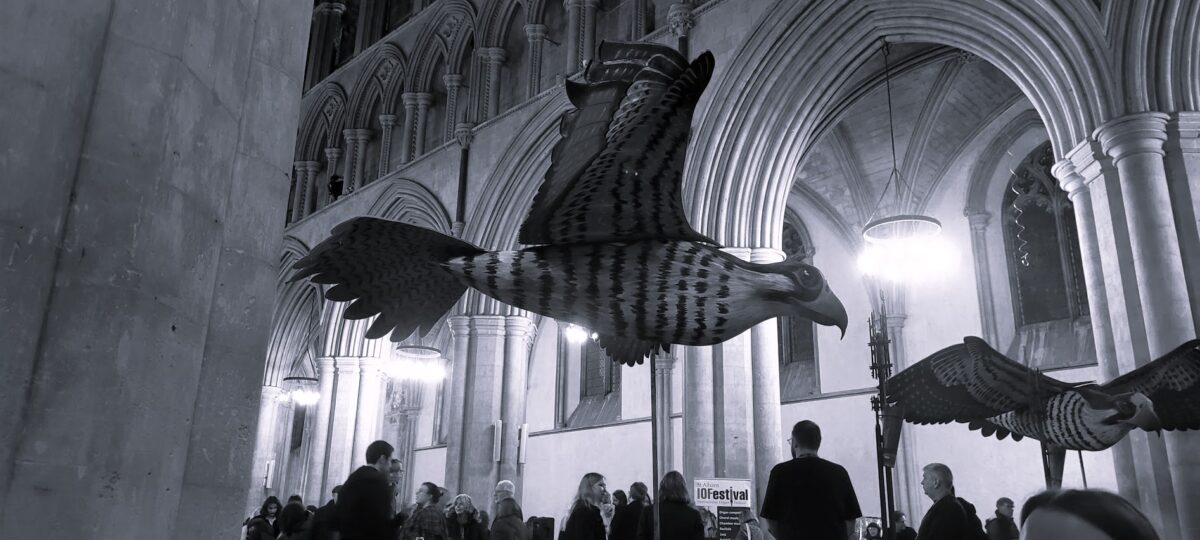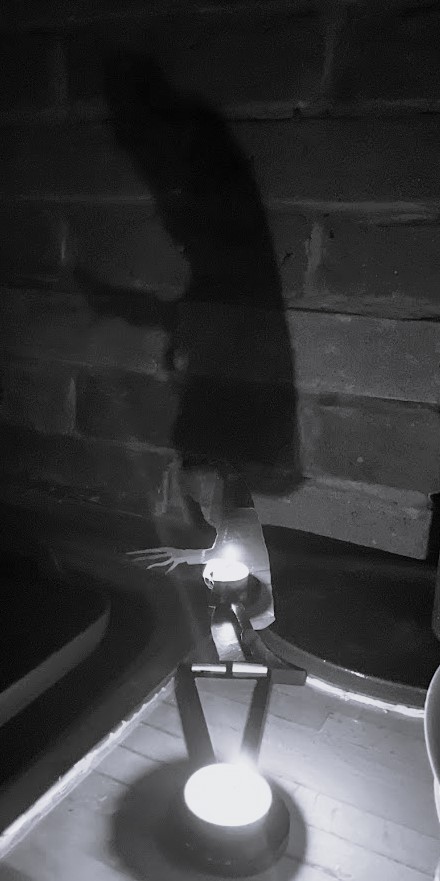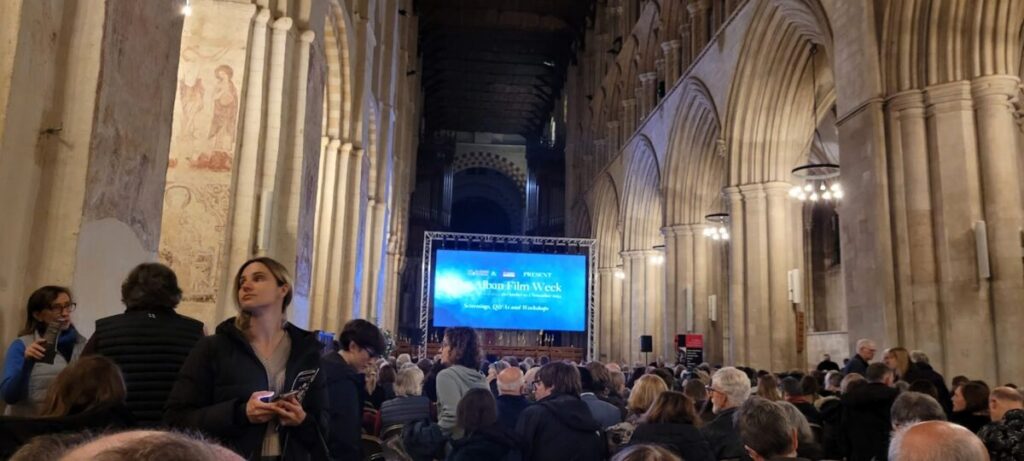St Albans Cathedral at night. Image by Tim Sandle
A screening of the full-length version of the German silent film Nosferatu: A Symphony of Horror took place at St. Alban’s Cathedral, Hertfordshire, UK. The cathedral is the second oldest in England, with construction starting in the 11th century, commissioned by the new ruling Normans.
The screening was accompanied by a live organist and various electronic additions (also performed live). This special screening – on Halloween – was part of the Alban Film Festival 2024, playing to a full house of 450 people.
The 1922 film is directed by F. W. Murnau and it features the actor Max Schreck as Count Orlok. Schreck plays a vampire who preys on the wife (Greta Schröder) of his estate agent (Gustav von Wangenheim) and brings the plague to their town.
If the plot sounds similar to Bram Stoker’s Dracula that is no coincidence. This was an unauthorized and unofficial adaptation, which led to legal action being taken and an instruction for every copy of the film to be destroyed.
Luckily some prints remained and the movie, now acknowledged as a fine example of the earliest forays into the horror genre, remains available for modern audiences to become acquainted with.
The name of the titular vampire – Nosferatu – derives from the archaic Romanian word Nesuferitu, meaning “the offensive one”.
The film is an example of German Expressionist cinema, so named as the emotions of the artist (or director) are central to the film and take precedence over the plot. This wave of film-making continued until the early 1930s (when political currents brought this wave of German cinema to an end).

Murnau was an acknowledged leader of this movement. He made 21 films, although only 12 survive in their complete state. Murnau was killed at the young age of 42 in a road traffic accident.
Thematically, Nosferatu is seen by some film critics as representing the fear of ‘the Other’ (or suspicion of ‘Otherness’ – alien cultures, different ways of life, immigration and other socio-cultural factors).
The music captured Hans Erdmann’s original score, with some additional features designed to enhance the feature. Such features were necessary since a large proportion of the original film score has been lost.
The quality of the film was very good, moving between monochrome, sepia and blue-ish white. Whatever the scheme, Orlok – the inhuman and corpse-like vampire – remains slightly terrifying.

The screening was very atmospheric, both for being within the cavernous cathedral and due to the live music accomplishment. Being on Halloween too add that extra special touch.
For those less enamoured with film history, a remake of Nosferatu, written and directed by Robert Eggers (who made The Lighthouse), opens in December 2024 / January 2025 (depending on territory).

